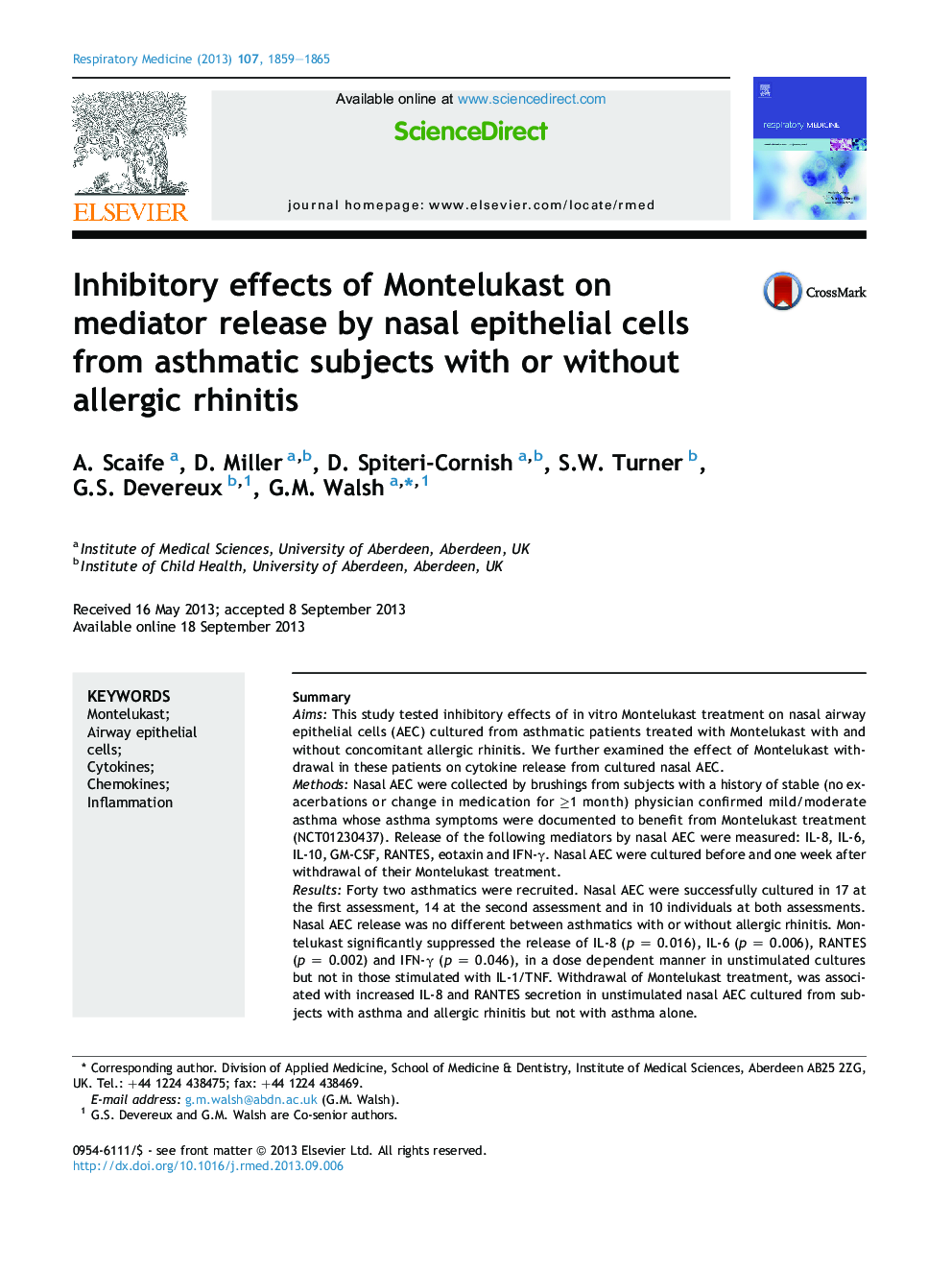| Article ID | Journal | Published Year | Pages | File Type |
|---|---|---|---|---|
| 6241561 | Respiratory Medicine | 2013 | 7 Pages |
SummaryAimsThis study tested inhibitory effects of in vitro Montelukast treatment on nasal airway epithelial cells (AEC) cultured from asthmatic patients treated with Montelukast with and without concomitant allergic rhinitis. We further examined the effect of Montelukast withdrawal in these patients on cytokine release from cultured nasal AEC.MethodsNasal AEC were collected by brushings from subjects with a history of stable (no exacerbations or change in medication for â¥1 month) physician confirmed mild/moderate asthma whose asthma symptoms were documented to benefit from Montelukast treatment (NCT01230437). Release of the following mediators by nasal AEC were measured: IL-8, IL-6, IL-10, GM-CSF, RANTES, eotaxin and IFN-γ. Nasal AEC were cultured before and one week after withdrawal of their Montelukast treatment.ResultsForty two asthmatics were recruited. Nasal AEC were successfully cultured in 17 at the first assessment, 14 at the second assessment and in 10 individuals at both assessments. Nasal AEC release was no different between asthmatics with or without allergic rhinitis. Montelukast significantly suppressed the release of IL-8 (p = 0.016), IL-6 (p = 0.006), RANTES (p = 0.002) and IFN-γ (p = 0.046), in a dose dependent manner in unstimulated cultures but not in those stimulated with IL-1/TNF. Withdrawal of Montelukast treatment, was associated with increased IL-8 and RANTES secretion in unstimulated nasal AEC cultured from subjects with asthma and allergic rhinitis but not with asthma alone.ConclusionsMontelukast treatment for asthma symptoms reversibly suppresses nasal AEC release of pro-inflammatory mediators (i.e. IL-8 and RANTES) but only in those cells cultured from subjects with concomitant allergic rhinitis.
